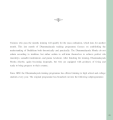Sipsong Panna : ค้นหาหนังสือธรรมะ หน้า 1 / 1
หน้าหนังสือทั้งหมด

93
Forms of Sa-Paper Manuscripts in Sipsong Panna
There are three forms of sa-paper manuscripts in the Sipsong Panna region. The first is the most common "ordinary wide-breadth manuscript", with a length of about 18c…
In the Sipsong Panna region, there are three main forms of sa-paper manuscripts. The first, the ordinary wide-breadth ma…

91
Exploration of Theravāda Buddhist Manuscripts in Sipsong Panna
…s of The Complete Collection of Chinese Palm-Leaf Scriptures.
II Theravāda Buddhist manuscripts in Sipsong Panna
The following is a study of the Theravāda Buddhist manuscripts of the Sipsong Panna region in terms…
…ficantly fewer texts than expected. This study also categorizes Theravāda Buddhist manuscripts from Sipsong Panna, primarily distinguishing between Palm-Leaf and sa-paper manuscripts. Historically, key Buddhist te…

96
The Imminent Extinction of Palm-Leaf Manuscripts in Sipsong Panna
III The Problem of the Imminent Extinction of Palm-Leaf Manuscripts in Sipsong Panna
Buddhism in Sipsong Panna is characterised by its manuscript culture. However, today the number of…
This text discusses the worrying decline of palm-leaf manuscripts in Sipsong Panna, where Buddhist manuscript culture is rich but facing imminent extinction. Key reasons include the …

87
Buddhist Manuscripts in China: Theravāda Buddhism in Sipsong Panna
Buddhist Manuscripts in China: A Case Study of Theravāda Buddhist Manuscripts in Sipsong Panna (Xishuangbanna, Yunnan Province, PRC)
Joe Zhou Ya
China, like many other countries in the world, …
… of Buddhist culture in China, specifically focusing on the Theravāda Buddhism of the Dai people in Sipsong Panna, Yunnan Province. Buddhism's introduction to China dates back to the first century BCE via the Silk…

88
Overview of Theravāda Buddhist Manuscripts in China
… De'ang
and sections of the Wa and Yi nationalities – live in this area which is
known in Tai Lü as Sipsong Panna, or สืบสองพันนา, which means "twelve
thousand rice fields." The Dai group, which has a population o…
This document provides an overview of Theravāda Buddhist manuscripts found in China, particularly in Yunnan Province. It discusses the significance of these manuscripts within the Dai community and hi

89
Preservation of Dai Buddhist Manuscripts in Sipsong Panna
…on and development of religious culture in minority areas.3 Most of the Dai Buddhist manuscripts in Sipsong Panna are made from the leaves of the palm tree, and sa-paper.4 More than 400 copies in total have been c…
This project aligns with the national focus on protecting religious culture in minority areas, specifically the Dai community in Yunnan. Research has identified more than 400 Dai Buddhist manuscripts,

90
Buddhist Manuscripts from Sipsong Panna Region
Buddhist manuscripts from the Sipsong Panna region can be divided into four categories. The first category consists of the Dai Pāli Tripiṭaka a…
Buddhist manuscripts from the Sipsong Panna region are categorized into four main groups: the Dai Pāli Tripiṭaka and Tripiṭaka commentary, freq…

92
The Role of Sa-Paper in Buddhist Manuscripts
…ed script, and Dai people regard these manuscripts as part of their Buddhist culture. Therefore, in Sipsong Panna, both sa-paper and palm-leaf manuscripts can be collected and worshipped in Buddhist temples10. The…
…by local artisans, serves as a practical alternative for copying both Buddhist and secular texts in Sipsong Panna. Although less symbolic than palm leaves, sa-paper's ease of use and durability allow it to complem…

94
Buddhist Manuscript Formats in Dai Region
…磨说) manuscript processed with cattle blood and mentioned above.
Theravāda Buddhist manuscripts in Sipsong Panna are written in Daile (this is how the Dai pronunciation of “Pāli” is rendered in Chinese pinyin) us…
… size. Most common are 17-line formats found in numerous jäṭaka texts. The Theravāda manuscripts in Sipsong Panna utilize the Tai Yuan “Dhamma” script, with few able to read the traditional version. Modern adaptat…

95
Dai Buddhist Manuscripts in Yunnan's Dehong Prefecture
…r. The script used to write these manuscripts is also different.13
The Buddhist manuscripts of the Sipsong Panna region are mainly copied (sa-paper manuscripts) or inscribed (palm-leaf manuscripts) by Buddhist mo…
This text discusses the unique tradition of Buddhist manuscripts among the Dai people in Dehong Autonomous Prefecture of Yunnan, where various types of manuscripts are produced. Most texts utilize sa-

97
Preservation of Palm-Leaf Scriptures in Dai Buddhism
…ist manuscripts, it seems likely that this ancient manuscript
culture will also vanish slowly from Sipsong Panna.
… modern education focuses on the New Dai script. The manuscript culture faces risks of vanishing in Sipsong Panna due to these educational shifts and the brief ordination periods that limit script learning. The fu…

5
Buddhi-Pāñña for Life Adjustment
ธรรมนาธา
วาสนา วิชาการทางพระพุทธศาสนา ปีที่ 5 ฉบับที่ 1 (ฉบับรวมเล่มที่ 8) 2562
Buddhi-Pāñña for Life Adjustment
Suvin RUKSAT
Abstract
This article aims to describe a way to balance life in modern
บทความนี้มุ่งเน้นการอธิบายวิธีการรักษาสมดุลชีวิตในสังคมสมัยใหม่ โดยใช้อุปกรณ์หนึ่งที่เรียกว่า Buddhi-Pāñña เพื่อป้องกันปัญหาสังคมทางวัตถุซึ่งมีอิทธิพลต่อชีวิตมนุษย์อย่างลึกซึ้ง การขาดความเข้าใจที่ถูกต

21
Exploring Buddhist Manuscripts and Teachings
…
Dr. Joe Zhou Ya
*Buddhist Manuscripts in China: A Case Study of Theravāda Buddhist Manuscripts in Sipsong Panna (Xishuangbanna, Yunnan Province, PRC)* 63
Kitchai Urkasame
*The Dhammakāya Verse: a Lan Na Th…
This text presents a collection of scholarly articles on Buddhist manuscripts and teachings, focusing on contributions from various experts. It includes studies on the Tipitaka Manuscripts of the Kham

86
Buddhist Manuscripts in China: A Case Study of Theravāda Buddhist Manuscripts in Sipsong Panna (Xishuangbanna, Yunnan Province, PRC)
Joe Zhou Ya

98
Preserving Palm-Leaf Manuscripts in Southwestern China
…igitalize their palm-leaf manuscripts. The activity of preservation of China’s national heritage in Sipsong Panna will encourage the development of harmonious links across national borders. As it is said; “there i…
In Southwestern China, palm-leaf and sa-paper manuscripts are crucial for studying ancient Buddhism, showcasing the influence of Theravāda Buddhism. The recent collection efforts by the local governme

81
Dhammadayada Training Programme
Trainees who pass the months training will qualify for the mass ordination, which lasts for another month. This last month of Dhammadayada training programme focuses on establishing the understanding
The Dhammadayada training programme offers an enriching experience where trainees who successfully complete the months of training qualify for mass ordination. This unique program emphasizes self-trai

23
Understanding the Noble Truths of Suffering
Idām dukkhami ariyasaccan ti me bhikkhave pubbe ananus-
sutesu dhammesu cakkhum udapādi ñānam udapādi paṇṇā udapādi-
di vijjā udapādi āloko udapādi. Tāṃ kho padiṃ dham dukkhami ariyasaccaṃ pariṇneyyan
ข้อความนี้พูดถึงอริยสัจสี่ในพระพุทธศาสนา โดยเน้นที่ความทุกข์และการเข้าใจที่มาของทุกข์ การดับทุกข์ และวิธีการที่จะเข้าถึงการดับทุกข์ ผ่านการพัฒนาสติปัญญาและการปฏิบัติทางจิตใจ. ข้อความนี้มีความสำคัญในฐา

22
The Nature of Anatta and Transference of Merit
Rūпаṃ анаттa, Vedана анаттa, Саньñа анаттa, Саṅkhấyṃ анаттa,
Viññāṇam анаттa,
Sabbe sankhāra anicca, Sabbe dhammaṃ анаттa.
Te (WOMEN: Tä ) mayam, Otiññāma jātīya जारामаранена,
Sokehi paradevi dukkehī
เนื้อหาเกี่ยวกับอรูปแบบของอัตตาในพุทธศาสนา รวมถึงแนวทางการโอนอานิสงส์ให้กับสรรพสิ่ง ในคำสอนของพระพุทธเจ้า พูดถึงธรรมะ การระลึกถึงความทุกข์ และความเชื่อมโยงกับการปฏิบัติธรรม เพื่อความสุขของสรรพชีวิตและ

80
Understanding Dhammakāya and its Significance in Buddhism
mental qualities128 or purity,129 or identifies it with realities to be
attained or experienced spiritually by noble disciples through the
penetration of the noble paths.130 In one instance, he connec
This text examines the term dhammakāya as articulated by Buddhaghosa, linking it to spiritual realities and teachings of the Buddha. It highlights the role of dhamma-vinaya as a guiding principle and

102
Wisdom and the Dhammakāya in Buddhist Teachings
Some of the qualities or forms of wisdom listed in the text are exclusive to Buddhas such as omniscience (sabbaññutāna), intrepdity (vesārajjanāna), and the ten supreme intellectual powers of a Buddha
The text highlights unique qualities of wisdom exclusive to Buddhas, including omniscience and the ten intellectual powers. It discusses the dhammakāya as the embodiment of a Buddha's inner wisdom, di
